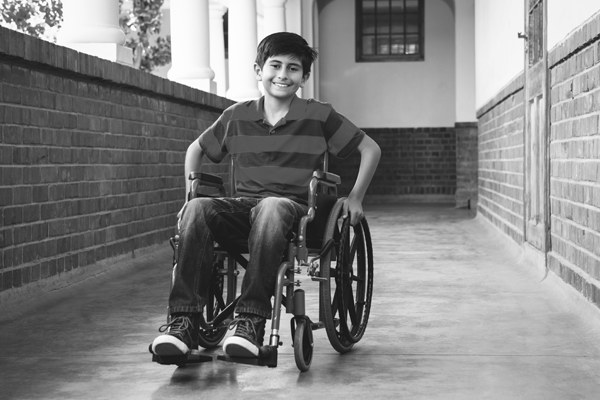Epilepsy Surgery Underutilized in Young Patients With Drug-Resistant Epilepsy
Epilepsy Surgery Underutilized in Young Patients With Drug-Resistant Epilepsy https://pediatricsnationwide.org/wp-content/uploads/2021/03/AdobeStock_105657926_header-1024x575.gif 1024 575 Katie Brind'Amour, PhD, MS, CHES Katie Brind'Amour, PhD, MS, CHES https://pediatricsnationwide.org/wp-content/uploads/2021/03/Katie-B-portrait.gif- January 03, 2022
- Katie Brind'Amour, PhD, MS, CHES

Research suggests that early surgical intervention can boost developmental outcomes and even cure young children with intractable epilepsy, but low referral rates and other barriers result in limited access for some.
Early surgery for drug-resistant epilepsy (DRE) can improve quality of life by reducing or even eliminating seizures. DRE affects about one in every three children with epilepsy and is more common among children under the age of 3. Although surgery carries risks and requires some thoughtful modifications for such small children, intervention at this age may offer patients the greatest long-term benefit. Unfortunately, surgical approaches to treating epilepsy are dramatically underutilized, according to a series of research studies conducted by neurologists and neurosurgeons at Nationwide Children’s Hospital and their colleagues in the Pediatric Epilepsy Research Consortium (PERC).
A recent study conducted by PERC suggests that children with the most severe presentations tend to be referred for surgical evaluation and additional testing more often than others, which seems logical when considering the general risks of brain surgery. However, this hesitancy to refer has resulted in only 1-11% of children with DRE receiving the potentially curative procedure, representing less than half the number expected to benefit from surgery.
“The impact of medically intractable seizures is profound when it comes to a person’s quality of life and safety,” says Adam Ostendorf, MD, medical director of the Epilepsy Surgery Program Nationwide Children’s, senior author on another recent study examining surgery utilization rates and a PERC co-investigator. “It’s highly likely that if medications are not working, a surgical option may be much more effective in controlling or eliminating the seizures and improving the overall safety and health of the child.”
Dr. Ostendorf and the group’s related research has also examined barriers in physician referral to surgical evaluation as well as patient- or family-related barriers to surgery consideration. In addition to misconceptions on the risks and benefits of surgery, knowledge gaps among referring physicians, inadequate access to specialty epilepsy centers and socioeconomic bias were common factors limiting referral for surgical evaluation.
“At a safe and experienced epilepsy surgery center, the benefits for early surgical intervention in young children with intractable epilepsy clearly outweigh the potential risk involved,” says Jonathan Pindrik, MD, surgical director of the Epilepsy Surgery Program at Nationwide Children’s and an active participant in the center’s epilepsy surgery research. “Experienced epilepsy surgeons can do these procedures safely — with careful adaptations for younger patients to improve safety and reduce perioperative risk — which justifies strong consideration of early surgical intervention.”
Evaluation and surgery are not straightforward among such young patients. Imaging and brain mapping strategies used to identify the affected sections of the brain that require resection or disconnection are less precise in very young children. This is due in part to the fact that the brain is still developing and malleable in infants and toddlers, which also makes structural manipulation of the brain more challenging during surgery.
Blood volume must be carefully managed in very small patients, meaning surgeons must consider performing the operation in stages if blood loss becomes a concern. The thinner nature of skin and bodily tissue also requires different handling and more careful techniques during surgery compared to older children and adolescents. Similarly, young children’s skulls and scalps are softer and thinner, making fixation and closure more challenging.
“While there are technical challenges for performing epilepsy surgery in infants and toddlers, it is important not to let the presumed surgical risk cloud a care provider’s consideration of surgical intervention,” says Dr. Pindrik. “Rates of seizure freedom after surgery can reach 80 or 90%, and younger children have the potential for better neurocognitive outcomes than eligible children who don’t have surgery.”
If seizures are uncontrolled for more than 7 years, damage to the brain can be permanent. Surgery at younger ages has the added benefit of reducing the likelihood of permanent damage even after large resections, allowing more seizure-free development time and improving both patient and caregiver quality of life.
The neurology and neurosurgery teams at Nationwide Children’s have implemented a number of quality improvement efforts to increase epilepsy surgery evaluations, which have resulted in a 50% increase in the number of eligible patients undergoing operations. They are also working to eliminate socioeconomic, age and disease-severity disparities in referral and surgery uptake.
“I have almost never had a parent say they regretted surgery,” says Dr. Ostendorf, who has another study on institutional epilepsy surgery practices recently published. “I frequently hear parents say they regret not having surgery sooner.”
References:
- Beatty CW, Lockrow JP, Gedela S, Gehred A, Ostendorf AP. The Missed Value of Underutilizing Pediatric Epilepsy Surgery: A Systematic Review. Semin Pediatr Neurol. 2021 Oct;39:100917.
- Ostendorf AP, Ahrens SM, Lado FA, Arnold ST, Bai S, Bensalem Owen MK, Chapman KE, Clarke DF, Eisner M, Fountain NB, Gray JM, Hopp JL, Riker E, Schuele SU, Small BV, Herman ST. United States Epilepsy Center Characteristics: A Data Analysis From the National Association of Epilepsy Centers. Neurology. 2021 Dec 8:10.1212/WNL.0000000000013130. Epub ahead of print.
- Perry MS, Shandley S, Perelman M, Singh RK, Wong-Kisiel L, Sullivan J, Gonzalez-Giraldo E, Romanowski EF, McNamara NA, Marashly A, Ostendorf AP, Alexander A, Eschbach K, Bolton J, Wolf S, McGoldrick P, Depositario-Cabacar DF, Ciliberto MA, Gedela S, Sannagowdara K, Karia S, Shrey DW, Tatachar P, Nangia S, Grinspan Z, Reddy SB, Shital P, Coryell J. Surgical evaluation in children <3 years of age with drug-resistant epilepsy: Patient characteristics, diagnostic utilization, and potential for treatment delays. Epilepsia. 2021 Nov 15. E-pub ahead of print.
- Pindrik J, Hoang N, Smith L, Halverson M, Wojnaroski M, McNally K, Gedela S, Ostendorf AP. Preoperative evaluation and surgical management of infants and toddlers with drug-resistant epilepsy. Neurosurgery Focus. 2018 Sep;45(3):E3.
- Samanta D, Ostendorf AP, Willis E, Singh R, Gedela S, Arya R, Scott Perry M. Underutilization of epilepsy surgery: Part I: A scoping review of barriers. Epilepsy and Behavior. 2021 Apr;117:10783
Image credit: Adobe Stock
About the author
Katherine (Katie) Brind’Amour is a freelance medical and health science writer based in Pennsylvania. She has written about nearly every therapeutic area for patients, doctors and the general public. Dr. Brind’Amour specializes in health literacy and patient education. She completed her BS and MS degrees in Biology at Arizona State University and her PhD in Health Services Management and Policy at The Ohio State University. She is a Certified Health Education Specialist and is interested in health promotion via health programs and the communication of medical information.
-
Katie Brind'Amour, PhD, MS, CHEShttps://pediatricsnationwide.org/author/katie-brindamour-phd-ms-ches/April 27, 2014
-
Katie Brind'Amour, PhD, MS, CHEShttps://pediatricsnationwide.org/author/katie-brindamour-phd-ms-ches/April 27, 2014
-
Katie Brind'Amour, PhD, MS, CHEShttps://pediatricsnationwide.org/author/katie-brindamour-phd-ms-ches/April 27, 2014
-
Katie Brind'Amour, PhD, MS, CHEShttps://pediatricsnationwide.org/author/katie-brindamour-phd-ms-ches/April 28, 2014







